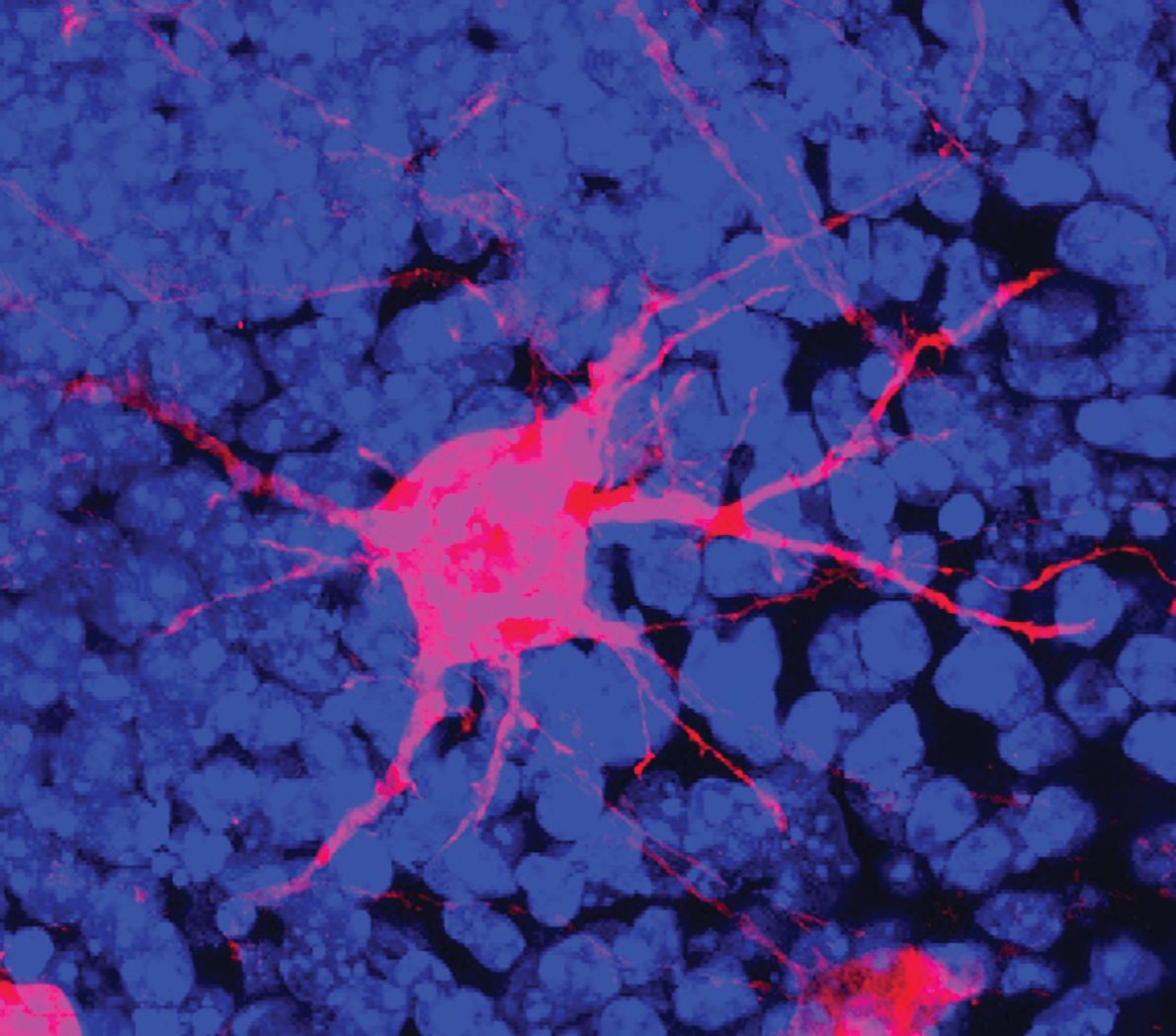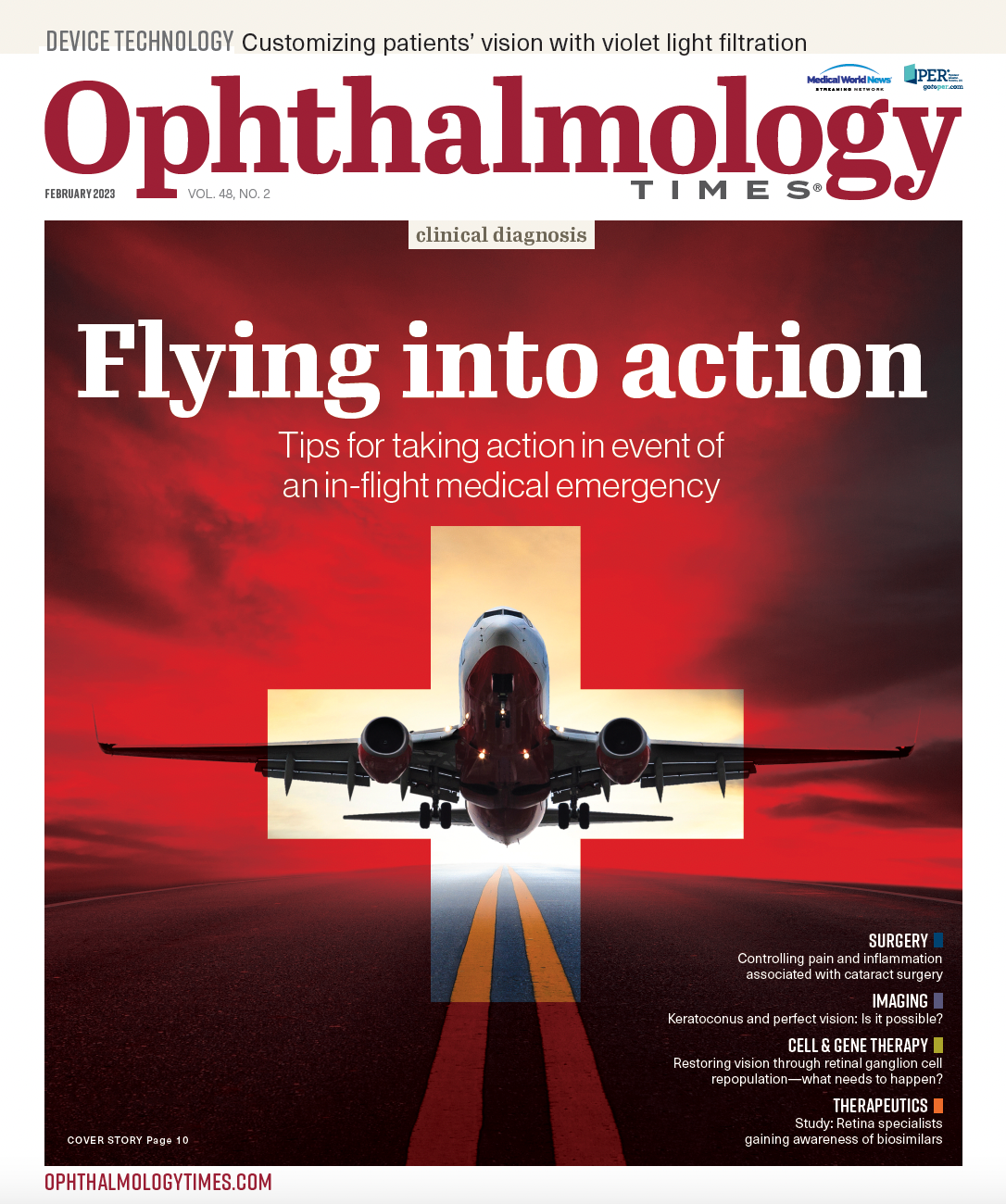Publication
Article
Digital Edition
Restoring vision through RGC repopulation—what needs to happen?
Author(s):
Despite its promise, RGC replacement represents a more formidable challenge.
Optic nerve diseases are both prevalent and irreversible; glaucoma alone affects more than 80 million individuals worldwide.

Special to Ophthalmology Times®
Ophthalmologists are all too familiar with the heartbreak that accompanies a new diagnosis of advanced optic neuropathy and the inability to offer patients treatment that can restore their vision. The unifying feature of all optic neuropathies is the death of retinal ganglion cells (RGCs), which are the projection neurons that transmit visual information from the retina to the brain via axons running through the optic nerve. Optic nerve diseases are both prevalent and irreversible; glaucoma alone affects more than 80 million individuals worldwide.
RGCs are central nervous system neurons and, like brain and spinal cord neurons, are not spontaneously regenerated following injury or insult in mammals. However, regenerative medicine advances are opening new pathways to restoring function in historically incurable neurodegenerative diseases, and ophthalmology is pioneering the field with clinical trials of stem cell–derived retinal pigment epithelium and photoreceptor transplantation to potentially restore vision in diseases such as age-related macular degeneration and macular dystrophies.
Unfortunately, RGC replacement represents a more formidable challenge. Unlike photoreceptors, which comprise only 4 major subtypes, are intrinsically light responsive and make only a single synaptic connection to an adjacent retinal bipolar cell, RGCs are much more complex. Primates possess more than a dozen molecularly, functionally, and topographically unique subtypes of RGCs that receive afferent input from complex inner retinal circuits that can include dozens of presynaptic bipolar and amacrine cells, and that must extend lengthy axons through the optic nerve and into 1 of several visual centers in the brain.
The list of challenges in making functional RGC replacement a reality is daunting and will require therapeutic manipulation of cellular pathways involving neuronal survival, migration, dendritogenesis and axogenesis, pathfinding, synaptogenesis, and myelination. However, there is reason to be hopeful. Although the concept of optic nerve regeneration has long been the subject of fantasy, recent advances in neuroscience have converged to a point where functional RGC replacement may now be feasible.
Generation of new RGCs
The generation of induced pluripotent stem cells (iPSCs) from individual patients is now commonplace. By obtaining a skin biopsy, a blood sample, or even a urine specimen, it is possible to create patient-specific cell lines capable of nearly infinite expansion and to differentiate those iPSCs into a variety of specialized cells that are lost in various disease states. Indeed, scientists have developed several methodologies to create immature RGCs or even entire neural retinas (retinal organoids) from stem cells.
(Image courtesy of Thomas V. Johnson III, MD, PhD)

These advances have provided the tools necessary to begin preclinical experimentation in transplanting new RGCs into eyes with optic neuropathy. Separately, investigators have made significant advances in understanding the molecular pathways that enable lower vertebrates, like teleost fish, to regenerate their optic nerves following injury. By activating several pro-regenerative genes in the retinal Müller glia of adult mice, investigators have successfully coaxed these cells to proliferate and then transdifferentiate into RGC-like cells. Therefore, viable techniques to regenerate RGCs from both exogenous and intrinsic sources are available.
Integration into the retina
Placing new RGCs into the diseased retina is only the first step in functional vision restoration. Once present, RGCs must elaborate dendrites within the inner plexiform layer (IPL) and generate synapses with bipolar and amacrine cells to receive visual information that will be processed and relayed to the brain. Recent work in our laboratory has demonstrated that this does not occur spontaneously after RGCs are transplanted into the eye.
The internal limiting membrane (ILM; the basement membrane that separates the neural retina from the vitreous cavity) constitutes a barrier to the retinal transit of drugs and gene vectors, and we have shown that the ILM also inhibits the retinal integration of RGCs introduced into the vitreous cavity. By disrupting the ILM, we have been able to achieve not only migration of transplanted RGCs into the neuroanatomically relevant layer of the retina but also extension of dendrites into the IPL, where synaptogenesis can occur.
Because removal of the ILM through surgical peeling is an established technique used to treat macular holes and other vitreoretinal disorders in human patients, this finding provides a directly translatable approach to achieving retinal engraftment of transplanted neurons. Research is now poised to leverage synergy between RGC transplantation approaches and recent advances in neuroprotection to achieve greater and more widespread survival of donor RGCs across the retina, and to begin promoting dendrite extension and patterning, synaptogenesis, and integration into specific inner retinal circuits.
Eye-brain connectivity
Perhaps the most arduous challenge to RGC replacement will be promoting and guiding donor RGC axons from the retina to relevant visual processing centers in the brain, such as the lateral geniculate nucleus. Fortunately, great strides in the neuroregeneration field have been made in this area over the past 15 years. By studying endogenous RGCs injured by direct optic nerve trauma, investigators have identified several molecular pathways that can be modulated to unleash a latent regenerative capacity of mammalian RGCs. With therapeutic manipulation, mouse RGCs can regenerate axons for several millimeters past the site of an optic nerve crush.
Although many regenerating axons meander in a random fashion—sometimes growing into ectopic locations such as
the contralateral optic nerve—in some instances, these axons reach relevant visual centers in the brain and even restore rudimentary visually guided behaviors. Ongoing work to provide chemotactic guidance cues is increasing the efficiency of targeted axon regeneration, and applying these techniques to repopulated RGCs pro- vides a promising means to regenerate the optic nerve de novo in cases of advanced optic neuropathy.
Collaboration to unify efforts toward RGC repopulation
Although significant headway has been made to generate, protect, enhance, or regenerate portions of RGCs in specific model systems, a lot of work clearly remains before a comprehensive treatment paradigm will be capable of replacing RGCs throughout the entirety of their contribution to the visual pathway. A pressing challenge is to begin consolidating the most efficacious approaches to each step of the RGC replacement process into a unified approach. Stem cell biologists are engineering RGCs with enhanced survival and integration capacity. Developmental biologists are detailing the molecular cues that drive patterning of RGC connectivity in the retina and the brain.
Cellular neuroscientists are curating the specific transcriptional and wiring patterns of RGCs and their changes in optic neuropathic disease states. Biomedical engineers are developing methods for transplanting delicate neurons on protective scaffolds and providing long-term trophic support and guidance cues to grafted cells.
Given the complexity of the task at hand, collaborative efforts among scientists with diverse expertise will be necessary to generate clinically viable methods for RGC repopulation. To help propel the field forward, a group of leading investigators in the fields of ophthalmology and neuroscience has organized the RGC Repopulation, Stem Cell Transplantation, and Optic Nerve Regeneration Consortium, which is bringing together more than 200 investigators worldwide (http://rrestore.info). By fostering in-depth discussions regarding the most important obstacles to be overcome and organizing sustained collaborative research endeavors, we hope major headway will be made in the coming years to bring RGC repopulation toward the stage of clinical trial.
--
Thomas V. Johnson III, MD, PhD

Thomas V. Johnson III, MD, PhD
P: 410-955-5080
Johnson is a clinician-scientist, glaucoma specialist, and translational neuroscientist at Wilmer Eye Institute, in Baltimore, Maryland, where he is also the inaugural recipient of the Shelley and Allan Holt Rising Professor of Ophthalmology.

Newsletter
Don’t miss out—get Ophthalmology Times updates on the latest clinical advancements and expert interviews, straight to your inbox.





